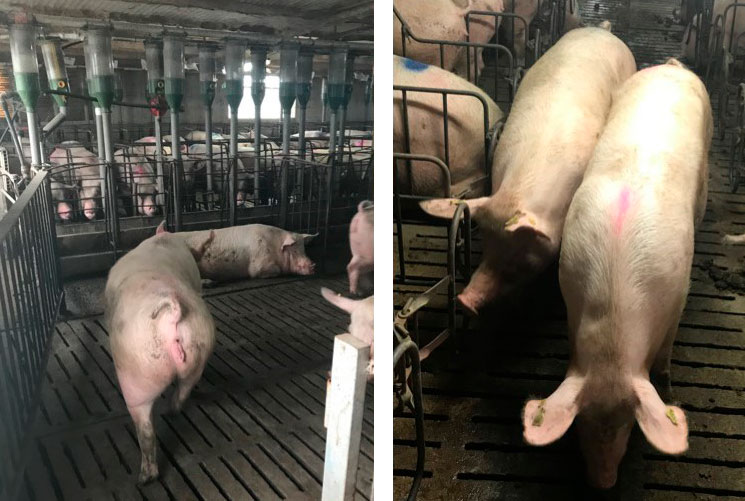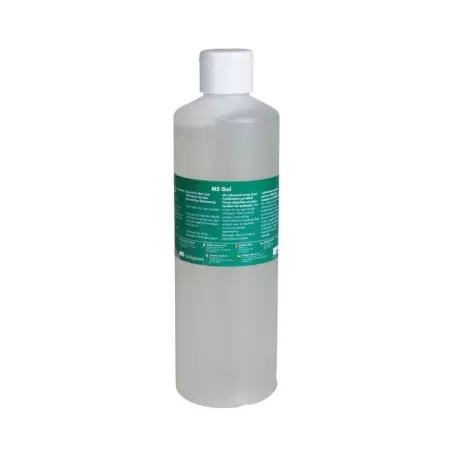Once I have inseminated the sow, when is the right time to move her?
Doubts always arise regarding the best time to move the sows after insemination.

A sow inseminated in a stall should be left in the same stall, and with the same neighboring sows, until 35 days of gestation.
If she must be moved, it should be done within the first 3 days after fertilization. We'll consider that fertilization will have taken place with the first insemination, although in systems with heat checking and immediate insemination it is more likely that fertilization will have occurred with the second dose.
If a 3-day insemination schedule is used, fertilization must be considered to have occurred on the first day. If we were to calculate from the last day and fertilization had occurred on the first day, we would be moving her at 5 days of gestation (a very risky time).
With this schedule it is not possible to release all the sows that are inseminated during the week together since at the end of the week there will be sows that have been inseminated 2 days ago and others 5 days ago, so "inseminating and releasing" must be done every 2 days or at most twice a week, but always taking into account when each sow was inseminated.

Photo 1. Moving sows at 35 days of gestation.
Another one of the most common questions is the movement of gilts once they come into estrus.
Ideally, the gilt should be put in a stall 3 days after the onset of estrus, kept in the same stall and with the same neighbors, flushed nutritionally 10 days before the supposed new heat, undergo heat detection, and be inseminated.
But if these steps are not followed, which of the following scenarios would be the least bad?
- To be in pens until the last minute, heat detect in pens, put her in the stall at the time of heat detection, and inseminate.
- Or put her in the stall seven days before heat and inseminate.
The least bad option is to put the sow in the stall 7-8 days earlier and have her come into heat in the stall. In this way, the sow will ovulate, not expressing her full potential as the pre-ovulatory flushing is broken, but she will ovulate. The first three days she will not eat or will eat poorly and then she will eat normally, but the size of the litter will still be affected.
When a sow is put in the stall during estrus, having come into estrus in the pen, the stress level is so high that she may not ovulate, causing a return. We will have the sow acclimated, but we will have generated 21 non-productive days.
As Javier explained in previous articles, sows that cannot express their full potential at the first farrowing and produce small litters sizes will generally be mediocre sows throughout their reproductive life.
In conclusion, neither of the two is recommended.
It is preferred to reduce the farm's inventory and have the space to acclimate the gilts to allow them to be in the stall at least 14 days prior to the first insemination.
What feeding guidelines do you recommend during the estrus period?
It is common to find farms in which feeding is restricted from the time the first sows come into estrus until 5-6 days of gestation. When the amount of feed is reduced for all weaned sows from the time the first ones come into estrus, the nutritional flushing of those that have not yet come into estrus is broken, thus reducing follicular growth and making it more difficult for them to come into heat.
Decreasing the sow's ration for 2-3 days is necessary, which is what really decreases the intake in a natural way, increasing the ration from day 3 of gestation to about 3 kg per day, even if the sow is overweight.
It is very important to maintain this ration during the first 30 days of gestation since the sow has to develop the placenta with adequate vascularization for the piglet to grow properly, preventing low birth weight piglets.
For sows with a high body condition, a dietary restriction can be established between 30 and 80 days of gestation.
The first month is crucial for the proper development of the placenta, for which the body's own reserves are not enough, but rather levels of proteins, vitamins, and microelements that can only be found in the diet are needed.
Birth weight, in addition to many other factors, is directly related to the feeding of the sow during the first month of gestation.
Thanks to this series of articles we will be able to correct different mistakes on our farms, establishing the guidelines explained in order to improve fertility and productivity through correct management and use of the different insemination techniques.






